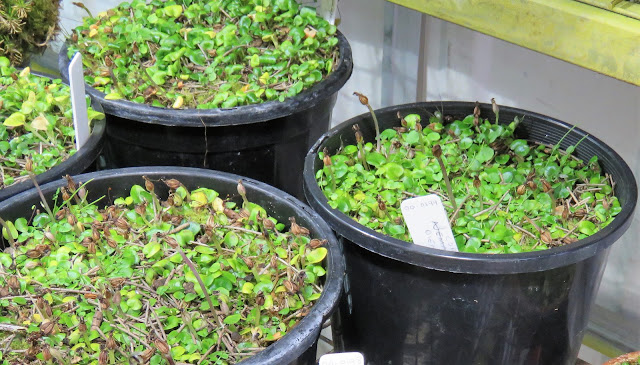Macquarie Island cabbage, and other chilly vegetable matter
In October last year, I chatted to Natalie Tapson, Horticultural Botanist at the Royal Tasmanian Botanical Gardens, about venation in leaves. Our interview ran as part of a thematic Last Half Hour on ABC RN's Blueprint for Living all about veins.
After tacking down a nice birch tree with networked (reticulate) veins, then an Astelia from New Zealand with nice long parallel veins, we headed off to find one of Natalie's favourite plants.
The Macquarie Island Cabbage (Stilbocarpa polaris) grows more or less happily in a converted shipping container the Botanical Gardens calls its Subantarctic House. It's cold and windy, just as I expect the subantarctic is. Natalie has seen, and experienced, the plant in its natural habitat.
The Macquarie Island Cabbage is more closely related to a carrot, than your kohlrabi, savoy or kale. You see it's in the family Apiaceae, with flowers in an umbel (umbrella-like), rather than Brassicaceae, with cross (crucifer) shaped flowers like a mustard.
Our subantarctic cabbage is often called a megaherb because it is soft and flexible but can grow to two metres tall. The leaves are juicy, round in shape and up to 45 centimetres in diameter. You can see why sailors would eat them as a source of vitamin C. You can also see they are covered in coarse hairs which may be why they haven't taken off as a gourmet delicacy.

The interconnected veins remind me of the surface of an old oil painting, or perhaps cracked mud in a dried up dam during a drought. Apart from the general descriptor reticulate (networked), the botanical terminology hinders more than helps I think. Still, if it interests you do track down the terms perfect, marginal, dichotomous, palmate and even caspedodromus. They all apply to venation patterns found in this leaf, to varying degrees.
Stilbocarpa has only one species, first collected and described by Kew Gardens Director Joseph Hooker, who found it on his expedition to New Zealand and the Antarctic waters in 1840. It is confined to just a few subantarctic islands.
Arriving back at the Botanical Gardens the next day, horticulturist Margot White took me to an even smaller cold room, to see a subantarctic orchid. It was the aptly named Windswept Helmet-orchid, Corybas dienemus, which is found only in wet peatland on the edge of the Macquarie Island.
I'd just seen one of its relatives in Western Australia, but only in fruit. The flower of both is close to the ground-hugging leaf, down where the potentially pollinating gnats live. After fertilisation the flower stalk extends to raise the fruit higher above the leaf, presumably to help the seed get carried away by those subantarctic gales.
Macquarie Island is a World Heritage Area managed by the Tasmanian Parks and Wildlife Service, who reckon the total island terrestrial flora at 43 native and 3 introduced (vascular) plant species. Four of those species are ferns, one is a club moss and the rest flowering plants. This doesn't include mosses and their ilk, but it does include one giant carrot, masquerading as a cabbage, and a tiny windswept orchid.





Comments
Tim